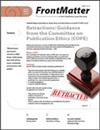Spiders (Arachnida: Araneae) feeding on snakes (Reptilia: Squamata)
IF 0.9
3区 农林科学
Q3 ENTOMOLOGY
引用次数: 10
Abstract
Abstract. In this paper, 319 incidents of snake predation by spiders are reported based on a comprehensive global literature and social media survey. Snake-catching spiders have been documented from all continents except Antarctica. Snake predation by spiders has been most frequently documented in USA (51% of all incidents) and Australia (29%). The captured snakes are predominantly small-sized with an average body length of 25.9 ± 1.3 cm (median = 27 cm; range: 5.8–100 cm). Altogether >90 snake species from seven families have been documented to be captured by >40 spider species from 11 families. About 60% of the reported incidents were attributable to theridiids (≈0.6–1.1 cm body length), a spider family that uses strong tangle webs for prey capture. Especially the Australian redback spider (Latrodectus hasselti Thorell, 1870), the African button spider (Latrodectus indistinctus O. Pickard-Cambridge, 1904), an Israeli widow spider (Latrodectus revivensis Shulov, 1948), and four species of North American widow spiders (Latrodectus geometricus C.L. Koch, 1841, Latrodectus hesperus Chamberlin & Ivie, 1935, Latrodectus mactans (Fabricius, 1775), and Latrodectus variolus Walckenaer, 1837) – equipped with a very potent vertebrate-specific toxin (α-latrotoxin) – have proven to be expert snake catchers. The use of vertebrates as a supplementary food source by spiders represents an opportunity to enlarge their food base, resulting in enhanced survival capability. Interestingly, the snakes captured by spiders also encompasses some species from the families Elapidae and Viperidae known to be highly toxic to humans and other vertebrates. Not only do spiders sometimes capture and kill snakes, quite often the tables are turned – that is, a larger number of arthropod-eating snake species (in particular nonvenomous species in the family Colubridae) include spiders in their diets.蜘蛛(蛛形纲:蜘蛛目)以蛇为食(爬行纲:角鲨目)
摘要本文根据一项全面的全球文献和社交媒体调查,报道了319起蜘蛛捕食蛇的事件。除南极洲外,所有大陆都有捕蛇蜘蛛的记录。在美国(占所有事件的51%)和澳大利亚(29%),蜘蛛捕食蛇的记录最为频繁。捕获的蛇主要体型较小,平均体长为25.9±1.3厘米(中位数=27厘米;范围:5.8–100厘米)。据记录,共有7科90多种蛇被11科40多种蜘蛛捕获。据报道,约60%的事件可归因于theridiids(体长约0.6–1.1厘米),这是一种利用强大的缠结网捕获猎物的蜘蛛科。特别是澳大利亚红背蛛(Latrodectus hasselti Thorell,1870)、非洲纽扣蛛(Latrodectus incictus O.Pickard Cambridge,1904,和Latrodectus variolus Walckenaer,1837)——配备了一种非常强效的脊椎动物特异性毒素(α-latrotoxin)——已被证明是专业的捕蛇者。蜘蛛利用脊椎动物作为补充食物来源,代表着一个扩大其食物基础的机会,从而提高生存能力。有趣的是,蜘蛛捕获的蛇还包括一些已知对人类和其他脊椎动物具有剧毒的蛇科和蝰蛇科的物种。蜘蛛不仅有时会捕捉并杀死蛇,而且情况往往会发生逆转——也就是说,大量以节肢动物为食的蛇物种(尤其是科蜘蛛科的无毒物种)的饮食中也包括蜘蛛。
本文章由计算机程序翻译,如有差异,请以英文原文为准。
求助全文
约1分钟内获得全文
求助全文
来源期刊

Journal of Arachnology
生物-昆虫学
CiteScore
2.20
自引率
10.00%
发文量
34
审稿时长
>12 weeks
期刊介绍:
The Journal of Arachnology publishes scientific articles reporting novel and significant observations and data regarding any aspect of the biology of arachnid groups. Articles must be scientifically rigorous and report substantially new information.
 求助内容:
求助内容: 应助结果提醒方式:
应助结果提醒方式:


